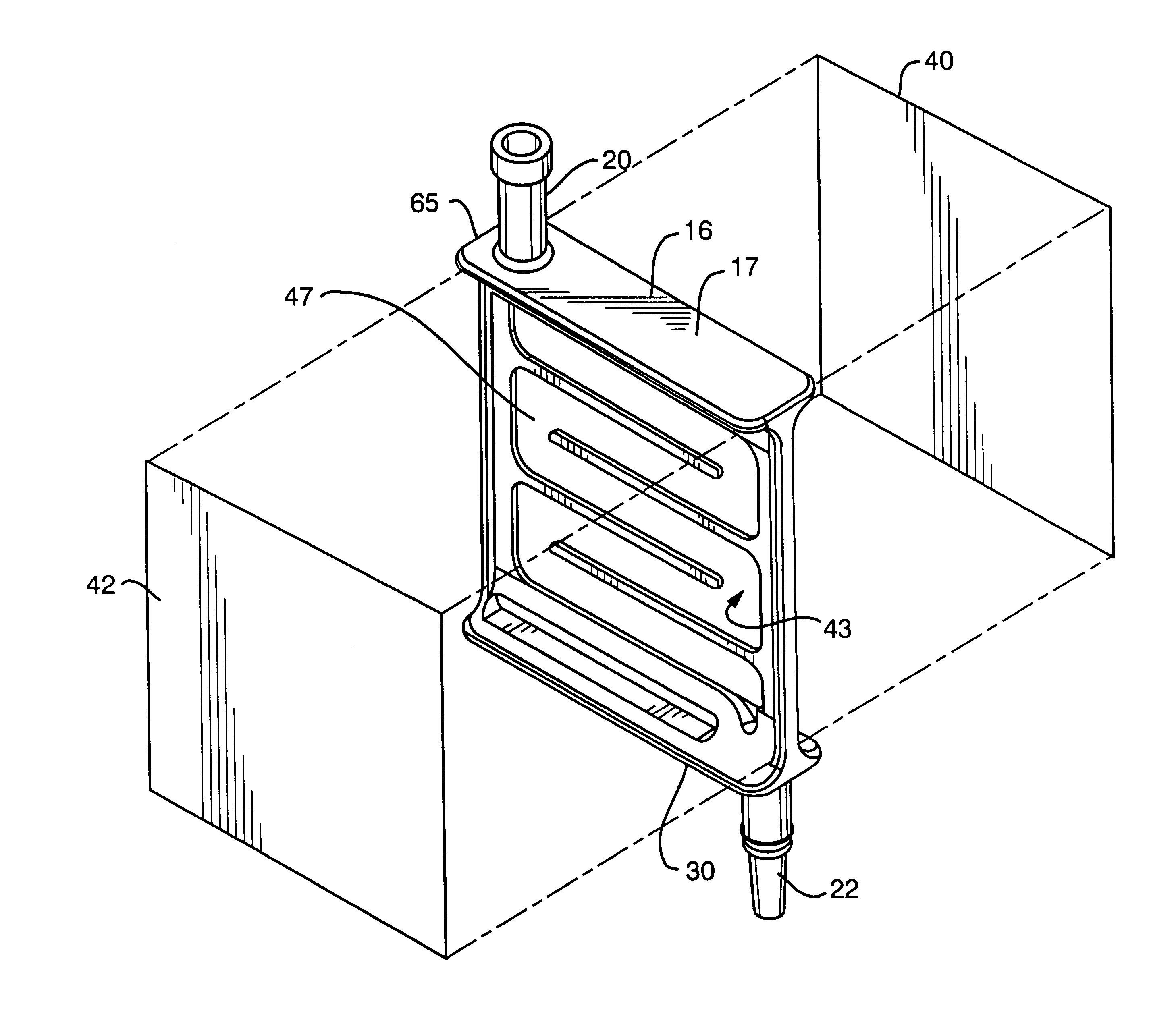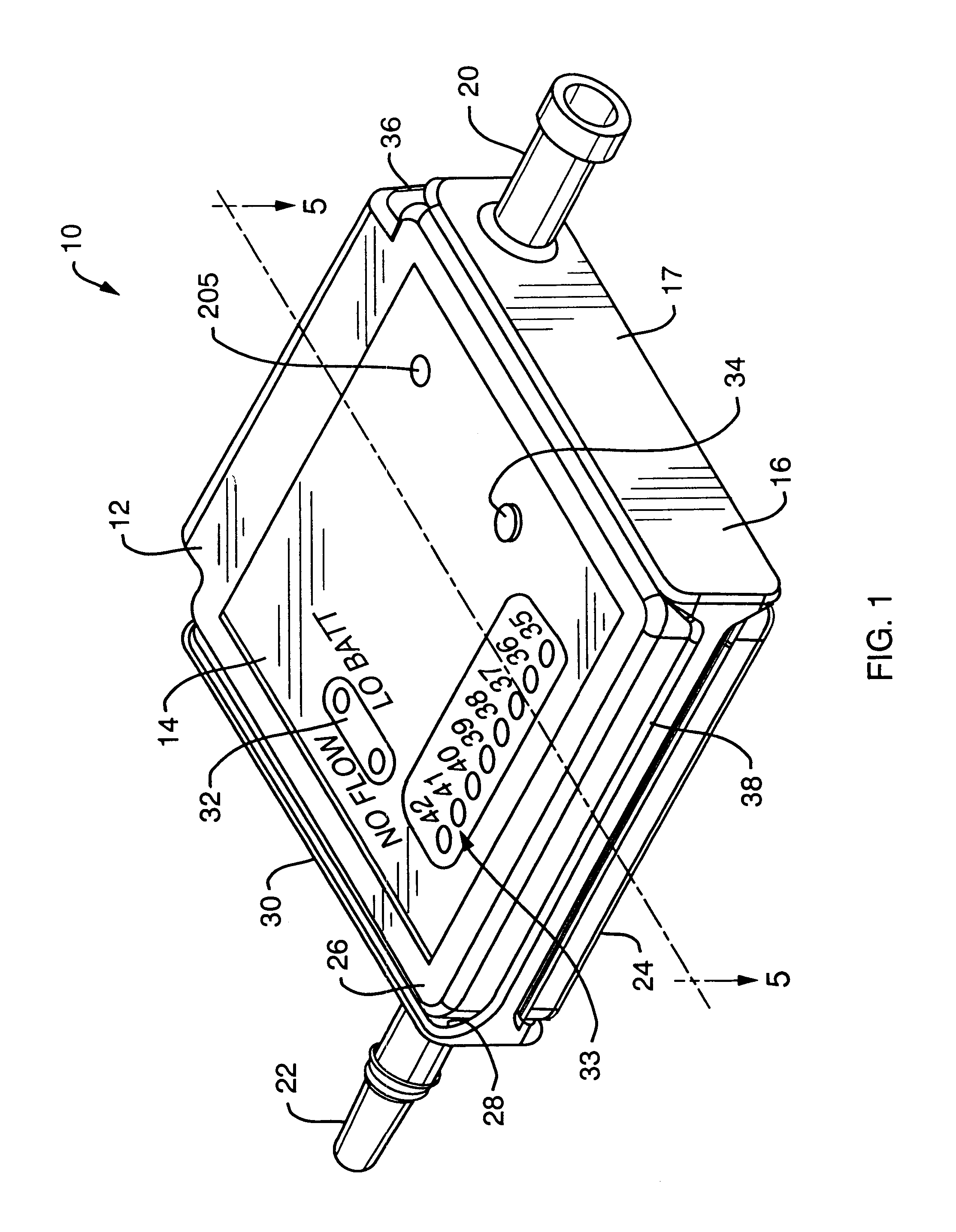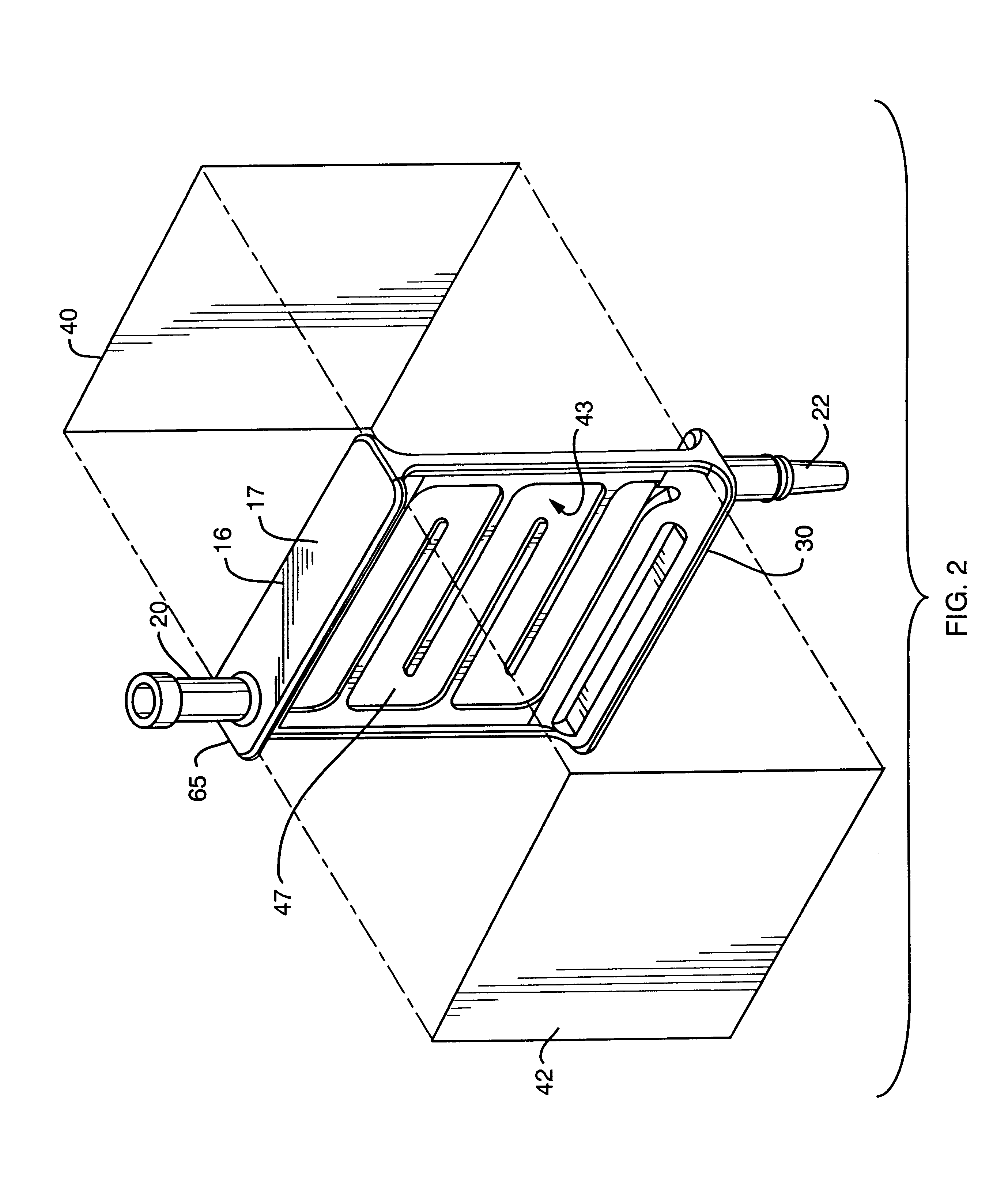Wearable intravenous fluid heater
a technology of fluid heater and wearable body, which is applied in the direction of lighting and heating apparatus, instruments, applications, etc., can solve the problems of fluid overheating, fluid may become overheated, and overheating can damage certain types of intravenously delivered fluids
- Summary
- Abstract
- Description
- Claims
- Application Information
AI Technical Summary
Benefits of technology
Problems solved by technology
Method used
Image
Examples
Embodiment Construction
FIGS. 1-12 and 15 depict one preferred embodiment 10 of the wearable infusion fluid heater of the present invention. Heater 10 comprises a hard plastic housing 12 in the form of two generally square-shaped members 24, 26 joined via a locking hinge mechanism 36. Hinge mechanism 36 comprises an upper hinge portion 37 and mating lower hinge portion 39. These hinge portions 37, 39 are pivotably connected to each other via conventional means (e.g., a bolt, screw, or similar means, not shown) fastened into the common opening through the portions 37, 39 formed when the portions 37, 39 are mated with each other and the respective openings 41,43 of the portions 37, 39 are in coaxial alignment with each other. Openings 41,43 extend longitudinally through the hinge portions 37, 39.
A rectangular indicator face plate 14 is slightly undersized relative to rectangular recessed area 57 of top plate 26 and is attached thereat via conventional means (e.g., glue or other type of bonding material) to t...
PUM
 Login to View More
Login to View More Abstract
Description
Claims
Application Information
 Login to View More
Login to View More - R&D
- Intellectual Property
- Life Sciences
- Materials
- Tech Scout
- Unparalleled Data Quality
- Higher Quality Content
- 60% Fewer Hallucinations
Browse by: Latest US Patents, China's latest patents, Technical Efficacy Thesaurus, Application Domain, Technology Topic, Popular Technical Reports.
© 2025 PatSnap. All rights reserved.Legal|Privacy policy|Modern Slavery Act Transparency Statement|Sitemap|About US| Contact US: help@patsnap.com



